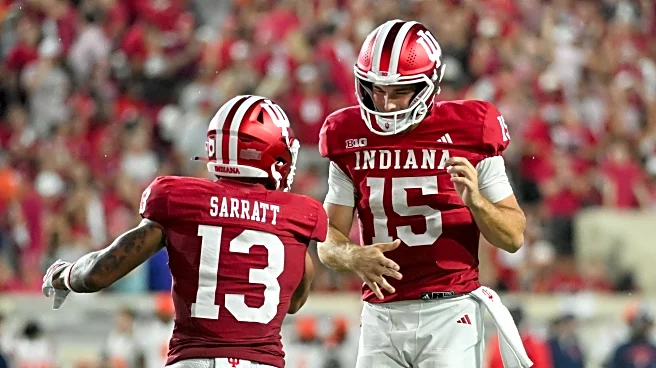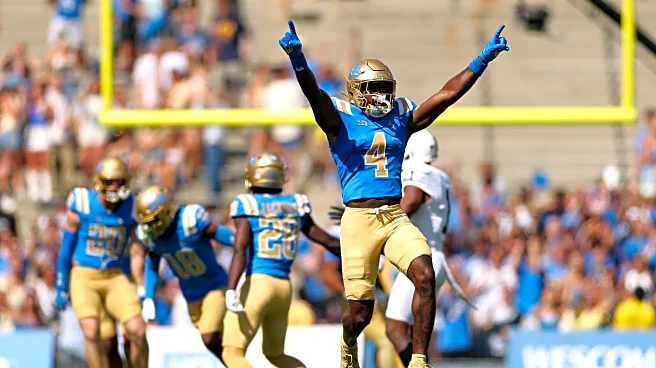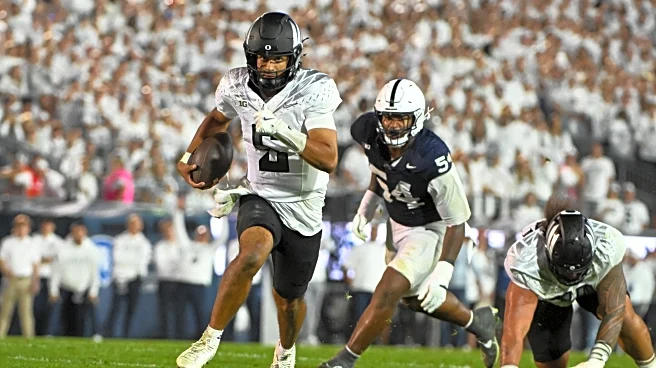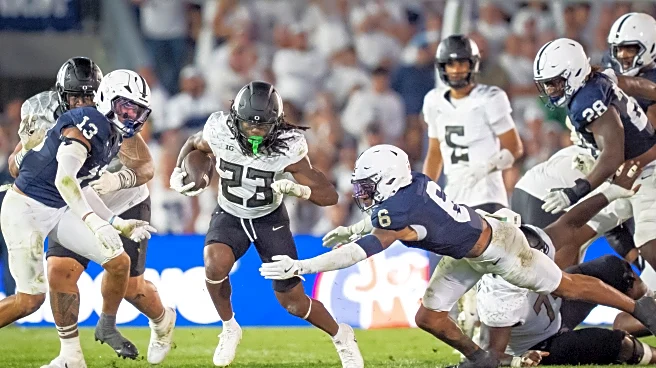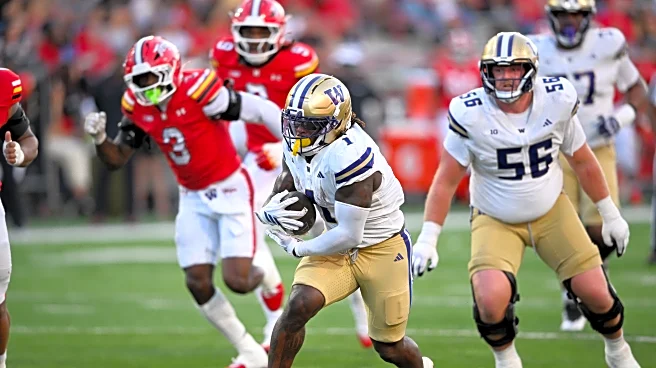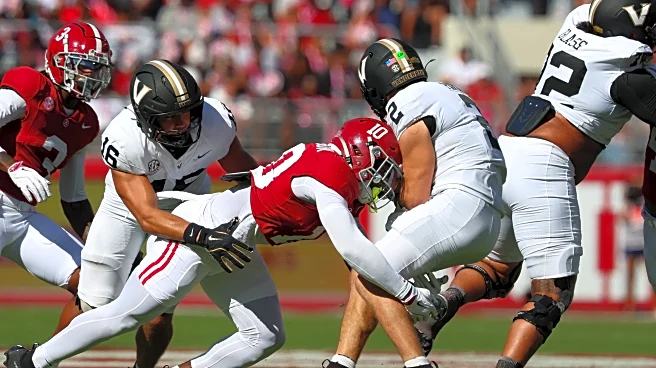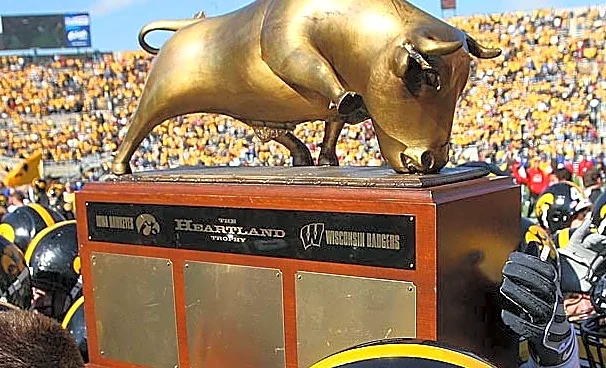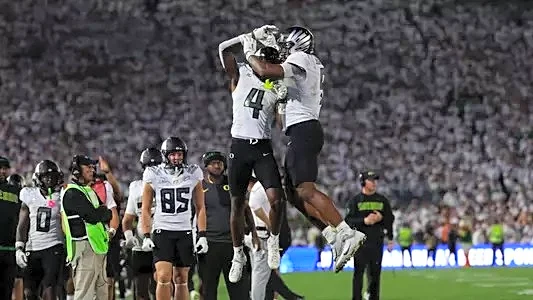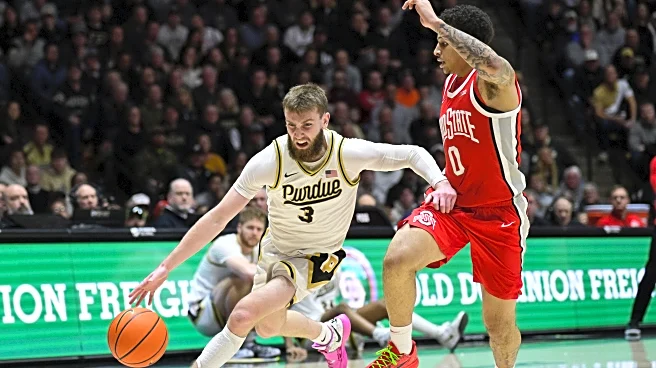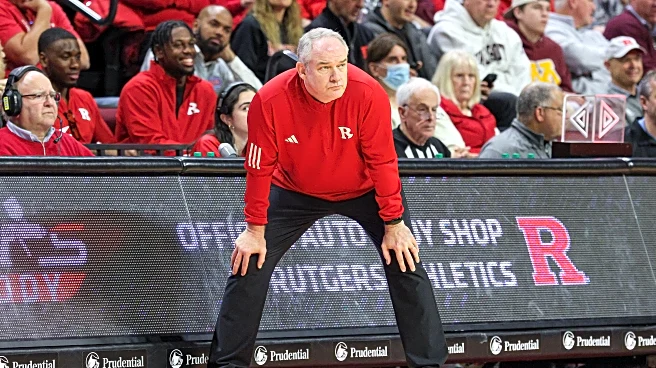With the first of two idle weekends during the season now past, Oregon has played four full games against FBS opponents. This is a large enough sample size for a statistical breakdown on both offense and
defense, as well as grading many individual players. Given the large number of personnel used even in non-garbage time prior to the Penn State game, some players don’t have enough grades on my tally sheet to draw any reasonable conclusions. The large amount of garbage time snaps also means there are sample size issues with certain down and distance situations. This means I don’t have enough numbers to justify visuals or charts for most position groups. I will interpret what I can from the numbers I do have, and will revisit all these performance metrics during the next bye week after the Wisconsin game.
This article follows up the conversation I had with hythloday regarding personnel use in last week’s podcast.
Offense
Oregon has been extremely efficient in the run game with above average passing explosiveness and yards per play in all categories . Quarterback #5 Dante Moore has graded out with an error rate of 16.66% on all passing plays. About 10% would be more along the lines of championship caliber. As this is Dante Moore’s first year running the offense in competitive play I suspect this error rate will continue to improve as we head into the second half of the season.
The efficiency in the run game has come from having large offensive linemen with high talent floors and effective backs who are breaking tackles. By far the back with the most carries is #27 Jayden Limar who boasts a 55.88% efficiency, 11.76% explosiveness, and 5.35 YPC. These would normally be considered pretty pedestrian numbers, but given the run blocking error rates on the offensive line (see below) I think these numbers actually speak very highly of how much Limar’s game improved in the off season. The fact that he beat out highly regarded transfer #20 Makhi Hughes (who has since declared he will redshirt) for playing time proves he has the trust of the staff.
In critical short yardage situations the offense has used Moore as a runner (highly efficiently though with a very small sample size) and I expect that to continue. I only counted 11 carries for #6 Noah Whittington as he was dinged up with an injury for several games. His numbers are ahead of Limar in every category though so I think he will take over as the 1A “general purpose” back with Limar as 1B. The best pure runners have been the talented true freshmen #0 Jordon Davison and #23 Dierre Hill Jr. Both have fewer than 20 carries so their numbers should be taken with a grain of salt. Still, Davison boasts a stupendous 76.92% efficiency as a short yardage specialist. Hill has been the best overall ball carrier between the 20’s with unsustainably high numbers of 71.43% efficiency, 35.71% explosiveness, and 10.57 yards per carry. Only the typical difficulty of freshmen with blitz pickup and route running will keep them from taking the “old men’s” jobs, though Hill is also valuable on sweeps and screens.
Quarterback Dante Moore’s most frequent targets in the passing game have been true freshman WR #1 Dakorien Moore (19 targets, 57.89% efficiency, 36.84% explosive, 10.89. YPT) and TE #18 Kenyon Sadiq (only 11 targets, but with better numbers than Dak). Dak’s numbers are even more impressive considering that Dante has forced the ball to him in several situations that were inadvisable (“locking on” or looking to avoid a sack). The only other receivers who have been targeted more than 5 times are WRs #2 Gary Bryant Jr, #4 Malik Benson, and #11 Jeremiah McClellan. McClellan is the only one whose numbers are underwater, though the sample size is so small right now a single completion would get him above water. Based on playing time against the Nittany Lions, I expect Dak, Bryant, Benson, and Sadiq to be the primary passing targets with McClellan and TE #9 Jamari Johnson secondary targets who see the field primarily as blockers.
Both the dip in explosive rushing and efficiency passing from last season can be laid squarely at the feet of the increase in offensive line errors. We spent quite a bit of time on the podcast discussing which of the difficulties the offensive line has had can be attributed to the transfer effect, and which are a matter of the individual players abilities. To summarize, according to hythloday’s model we are entering the part of the season where the errors due to the transfer effect will noticeably decline. By about mid-November (in time for USC and washington) the line’s error rates will be about as low as they can be expected to achieve this year. This should be most notable on the interior of the line where Pregnon has been a rock and the returning starters’ (Laloulu and Iuli) difficulties are more likely due to the transfer effect than their personal talent ceilings.
What can’t be expected to improve are the physical limitations the Ducks have at the tackle positions. Harkey is a natural run blocker but his athletic limitations mean he struggles with speedy defenders in pass protection. Against the highest level competition I expect Oregon to assign TEs and backs to “chip” his side as part of the protection scheme. At left tackle, World simply hasn’t had enough time with a high level weight training and nutrition program to get strong enough to anchor against the bull rush. He has the potential to fully develop into his frame at some point, but it is extremely unlikely he can meaningfully bulk up much further in the middle of the season. The best case scenario is he learns to give ground slowly without risking a hold on nearly every drop back.
Defense
The explosiveness and yards per play numbers for Oregon’s defense have been elite… but that is probably as much a product of the offenses they have faced so much as their own abilities. In terms of efficiency they are above championship caliber against the pass (against sub-standard quarterbacks) but only just above water against the run. I don’t have large enough sample sizes to show a full breakdown of various down and distances, but some trends are noticeable.
On first and ten (which does have a robust sample size) Oregon defends the run at 62.96% efficiency and the pass at 56.67%. That’s a bit below where a championship defense should be against the pass, but an excellent run number against modern offenses. The run defense numbers crumble in any other situation though. Excluding first down as well as second and short (when the defense will concentrate on defending the pass and gladly surrender a 1st down) the rush efficiency is at 38.47%. Even with the pass defense at greater than 60% in all situations besides 1st and 10, this leaves the Ducks vulnerable to “elephant march” drives where opponents simply need to get into 3rd and 3 or less then run the ball to move the chains.
On the line of scrimmage DT #1 Bear Alexander and edge #10 Mateo Uiagelelei are the highest graded run defenders. Both DT #52 A’mauri Washington and edge #44 Tatum Tuioti have improved from their numbers from last year. In relief OLB #9 Blake Purchase isn’t far behind, with backups DT #50 Tionne Gray, #99 Terrance Green, and DE Ashton Porter holding serve (as many positive grades as negatives). Uiagalelei has continued to be the most effective pass rusher, but Tuioti has found another gear this year and has nearly as many havoc plays against the pass Uiagalelei on my tally sheet. Washington and Alexander have both been disruptive on the interior, but pass rush specialist #42 Aydin Breland simply hasn’t seen enough snaps for me to rate his effectiveness against his team mates.
I had noticed on film that the inside linebackers were responsible for many of the issues in rush defense, but it wasn’t until I ran the numbers that I could clearly see how serious the issue has become. Former baseball player #28 Bryce Boettcher has similar run defense numbers to last year, and new rotational player #54 Jerry Mixon is holding serve. Mixon has a smaller sample size but is grading out better than Boettcher (who has regressed to below water) in pass defense so far. The elephant in the room is the alarming regression of #26 Devon Jackson. After the 2024 Big Ten Championship game I had Jackson’s error ratio at 53.85% in rush defense and 39.02% in pass defense. So far this year those numbers have cratered to 79.85% error ratio against the run and 77.78% against the pass, nearly 4 errors to every successful defensive contribution. Were any of the highly regarded redshirt freshmen available, it is possible Jackson would be benched to continue to heal and regain his confidence after an off season injury. Unless the health of this room improves though, the only option is to keep Mixon next to Boettcher as often as possible and only bring on Jackson when one of them needs to catch their breath.
Possibly as a result of the situation with the inside linebackers, DC Tosh Lupoi has been deploying his safeties in different ways this season. Most notably, #31 Dillon Thieneman will frequently be lined up 10 yards deep in the middle of the field in position to directly help against the run. When this happens, the nickel back (#22 Jadon Canady or #0 Daylen Austin in relief) will be lined up with the other safety (#21 Aaron Flowers or, less frequently, #2 Kingston Lopa) in a two-deep look. The defense has also mixed in more typical 1-high and 2-high looks with the nickel/STAR lined up against the passing strength of the formation and Thieneman deep.
This more fluid deployment means there is a “strong safety” in Thieneman who can also play deep, a “free safety” (Flowers or Lopa), and a “STAR safety” (Canady or Austin) who might also be asked to play deep on any given snap. With #12 Payton Woodyard not being seen during meaningful play, that is only five players to cover three spots. Should any of these five miss extended time it would require shuffling assignments and possibly borrowing a player from the cornerback room.
In coverage, the Canday/Austin combination has graded out similarly to Brandon Johnson last year. Austin went off late with an injury against Penn State so we’ll have to wait for the availability report to see what his status is for Indiana. The other safeties are either holding serve (Lopa and Flowers combined) or underwater (Thieneman) in pass defense. All grade out well reasonably against the run (though Thieneman and Flowers have room to improve), with Canady in particular being surprisingly effective as a tackler.
True freshman #4 Brandon Finney Jr. and R.-freshman #7 Ify Obidegwu have seen the most snaps at corner. Veteran transfer #5 Theron Johnson has worked his way back into the rotation after an early season injury meaning #3 Sione Laulea has been relegated to a backup role. We haven’t seen #6 Jahlil Florence during meaningful play so far this season. Despite being targeted more frequently than the others, Finney has the best grades in pass defense of any Duck on my tally sheet. Obidegwu hasn’t been as frequently targeted though offenses have tended to succeed when they have thrown his way, so sample size issues may be clouding this. It is clear Finney and Obidegwu are the future of Oregon’s secondary with Johnson helping keep legs fresh and providing veteran leadership. If those three stay healthy, I expect them to take all the meaningful snaps going forward. I also expect opposing offenses to game plan away from them, targeting the linebackers and safeties in pass coverage whenever possible.

